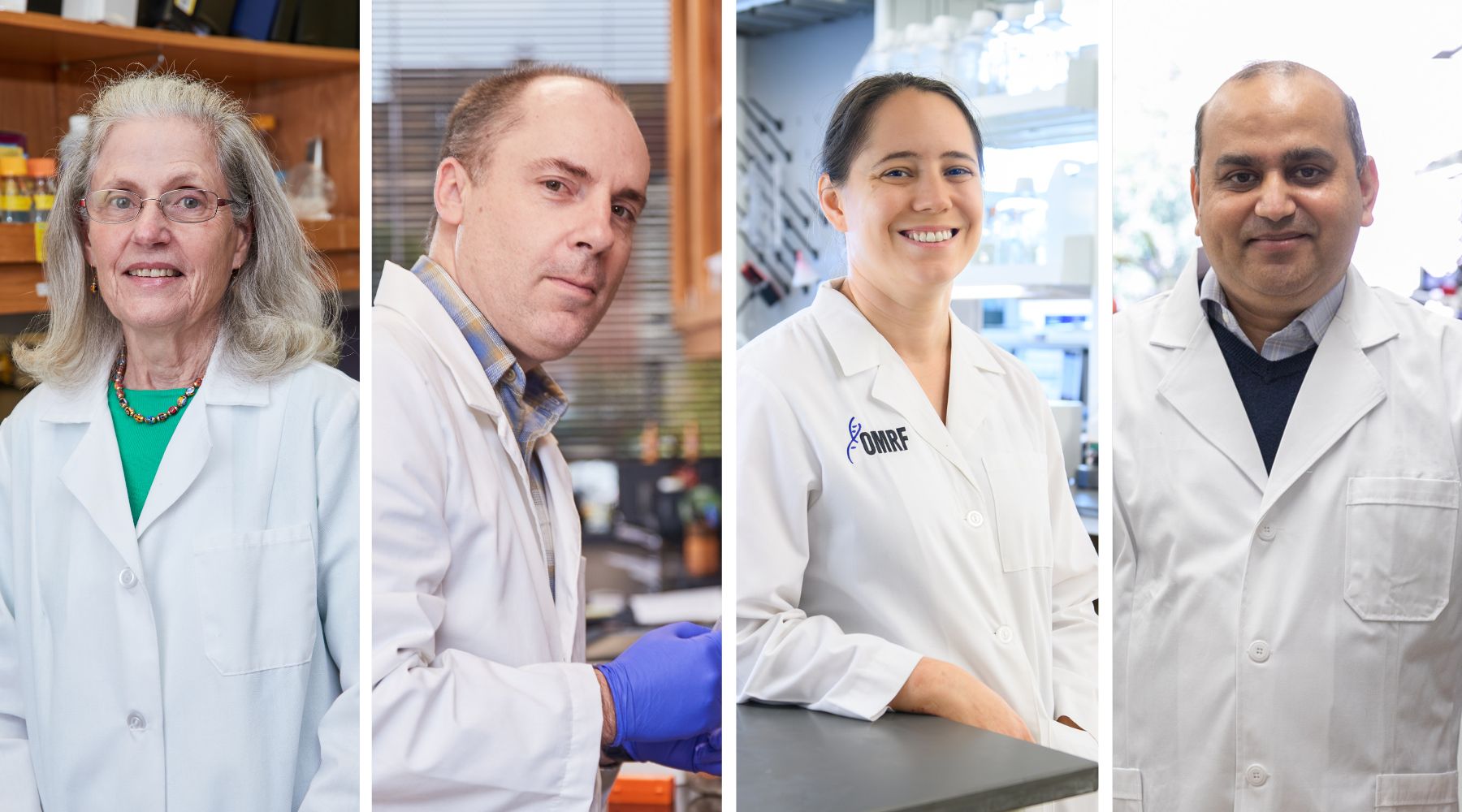The National Institutes of Health has awarded $1 million to the Oklahoma Medical Research Foundation to study how the packaging of DNA within our cells changes during early development.
Three OMRF labs will spend the next year studying different aspects of a process called heterochromatin formation. A better understanding of the process could potentially lead to new ways to prevent birth defects.
“When we’re born, our DNA is laid out like a garden hose would be when you need to use it,” said scientist Chris Sansam, Ph.D. “At other times, your DNA is tightly compacted in a similar way to how you would store that garden hose for the winter. Heterochromatin is that tightly packed form.”
When heterochromatin fails to package correctly in a developing embryo, it can cause children to be born with an array of diseases, including neurological disorders and a form of muscular dystrophy.
Sansam’s lab specializes in DNA replication and early vertebrate development. He’ll work on this study with scientists Elizabeth Finn, Ph.D., who studies how DNA instructions are organized in cells through the action of heterochromatin, and Gaurav Varshney, Ph.D., who uses the gene-editing technology CRISPR to study human genetic diseases through zebrafish.
Zebrafish, each the size of a paper clip, serve as a top-notch research model for several reasons: They are prolific, with females laying up to 200 eggs a week; the embryos are transparent, making it easier to study their development; their bodies develop extremely quickly; and they share a counterpart gene with more than 80% of human genes associated with disease.
“The changes we’re interested in begin the moment the eggs develop into embryos,” Sansam said. “If they’re born this morning, they go through major developmental milestones by dinnertime, and within five days they’re feeding, swimming animals.”
Sansam said “a really strong community” of developmental biologists use zebrafish as their research model. The species’ popularity makes it easier to draw conclusions and put a discovery into context with those made by other scientists, he said.
During the next year, Sansam hopes to create a map of which parts of the genome form into heterochromatin during different points of development. Finn’s lab will try to pinpoint where the heterochromatin forms within the cell and whether it moves during different stages of development. Varshney will develop new CRISPR tools to study the function of genes believed to be vital for heterochromatin formation.
“The research funded by this supplement will lay the groundwork for future studies of genetic mutations that cause birth defects in humans, including brain malformations and developmental delays,” said OMRF scientist Linda Thompson, Ph.D., who holds the Putnam City Schools Distinguished Chair in Cancer Research at OMRF. “Ultimately, we hope to develop strategies to mitigate the consequences of those genetic mutations.”
This one-year Center of Biomedical Research Excellence grant, No. 3P30GM149376-02S1, is a supplement to the one Thompson first received in 2013 to expand developmental biology research in Oklahoma. Since then, the National Institute of General Medical Sciences, part of the NIH, has twice awarded five-year renewals, in addition to this supplemental funding.



